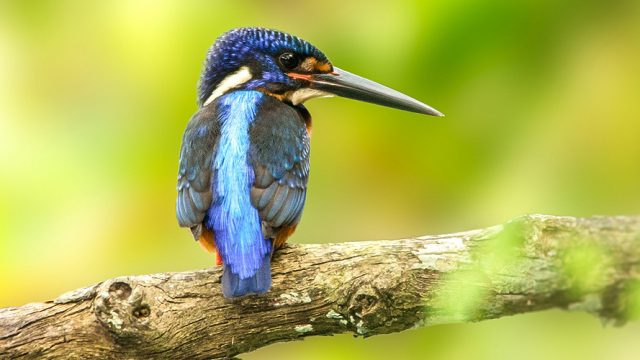Did you know that Goa is home to over 458 bird species? Yes, it is not just about sand, sun and sea—Goa’s feathered denizens are as important as they come. The hinterlands are home to some exotic bird species such as Sri Lanka frogmouth, blue-eared kingfisher, collared kingfisher, to name a few. And also, gets visited by a wide range of migratory birds like the painted stork, Asian open-bill, woolly-necked stork and northern pintail. These are just a few among many. Here is a list of five unexplored birding sites that will, for sure, help you see Goa in a different light.
Mhadei Wildlife Sanctuary


This sanctuary in North Goa is home to 255 species of birds. The portion of Western Ghats which falls under Mhadei Wildlife Sanctuary is an important birding area because of the presence of species like Nilgiri wood-pigeon, Malabar parakeet, Malabar grey hornbill, grey-headed bulbul, Rufous babbler, white-bellied blue flycatcher and crimson-backed sunbird—all endemic to Western Ghats. And speaking of winged creatures, birds are not the only attractions here, a record number of butterfly species have also been sighted within the park. You can find species like southern birdwing, striped tiger, common Jezebel, common Indian crow, blue Mormon and the blue tiger butterfly till the end of summer.
Carambolim Bird Sanctuary

This man-made lake is home to a number of species of birds—both resident and migratory. Carambolim consists of a lake and a forested area that makes for a perfect spot for both aquatic and terrestrial bird species. It is located in the Tiswadi Taluka, 12 km away from Panjim.
Salim Ali Bird Sanctuary

Though not identified as an Important Bird and Biodiversity Area (IBBA), the estuarine mangroves of Salim Ali Bird Sanctuary are an important birding site. It is located on the island of Chorao, along the Mandovi River. The island’s mangroves come to life during winter (October-March) when a number of migratory marsh-dwelling birds take up residence here.
Cotigao Wildlife Sanctuary


This south Goan sanctuary is located in the Goa-Karnataka border. Though it does not host a large species of animals, it is popular among nature lovers for its beautiful forest cover and its winged residents. There is an observation deck buried deep in the forest that gives a fantastic view. The impressive tall trees are one of the many attractions that draw in nature lovers. This heavily wooded area is an excellent home to smaller animals such as flying squirrel, slender loris, four-horned antelope; bird species like white-bellied woodpecker, Malabar trogon, to name a few. Cotigao WS is also a favoured residence of Malabar pit viper, flying lizard, gold-backed gliding snake and Malabar tree toad, among many.
Bhagwan Mahavir Wildlife Sanctuary & National Park

Bhagwan Mahavir WS & NP is located on the foothills of the Western Ghats, in Mollem. This sanctuary is an important part of Mollem National Park and is so heavily wooded that the forest canopy is almost impenetrable! The sanctuary is home to 128 species of endemic plants, wild animals like black panther, leopards, Bengal tiger, common langur, Malabar giant squirel and slender loris among many. Birds like Sri Lanka frogmouth, the state bird—ruby-throated yellow bulbul, greater Indian hornbill, Malabar pied hornbill, and three-toed kingfisher, to name a few.




